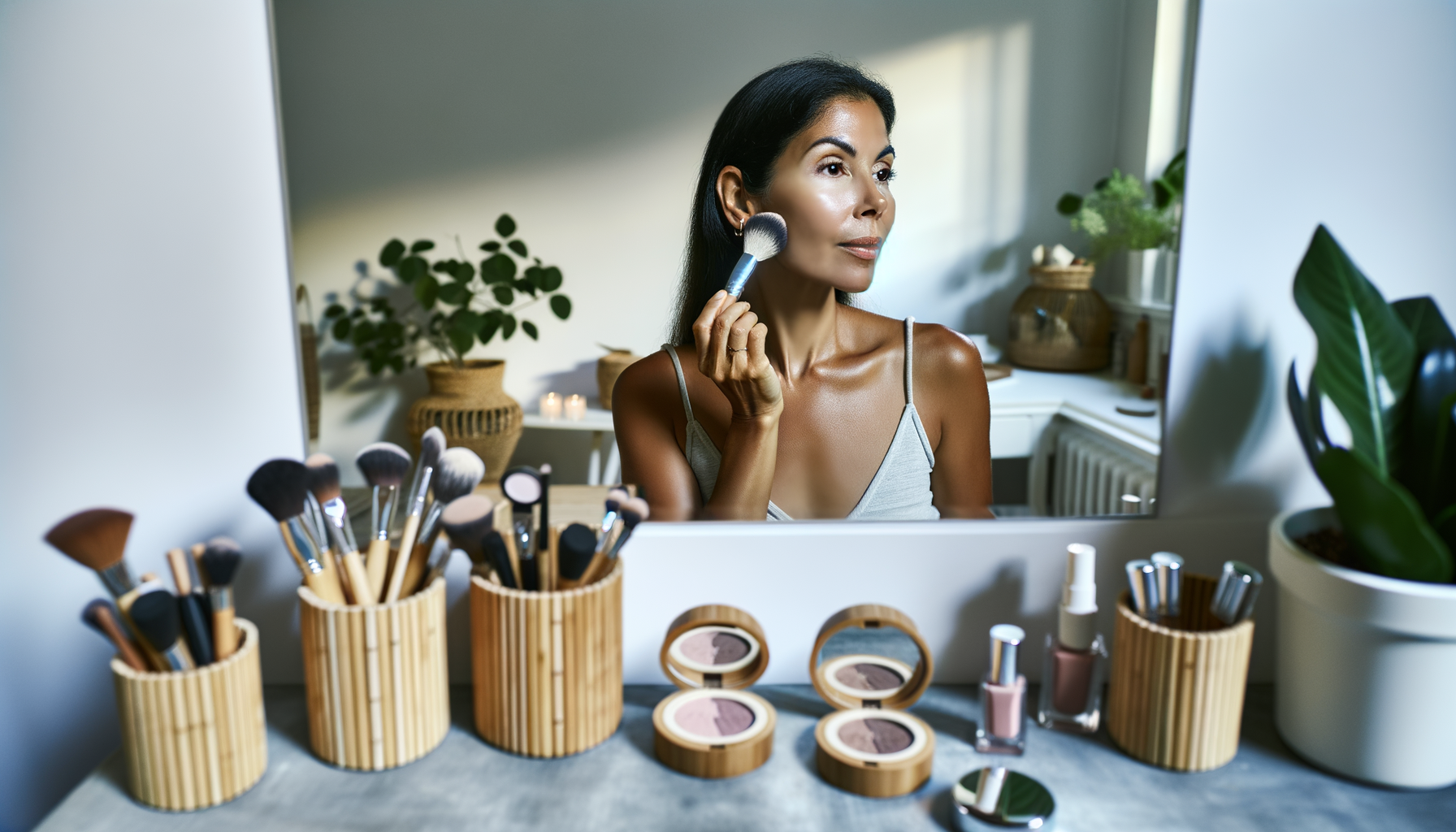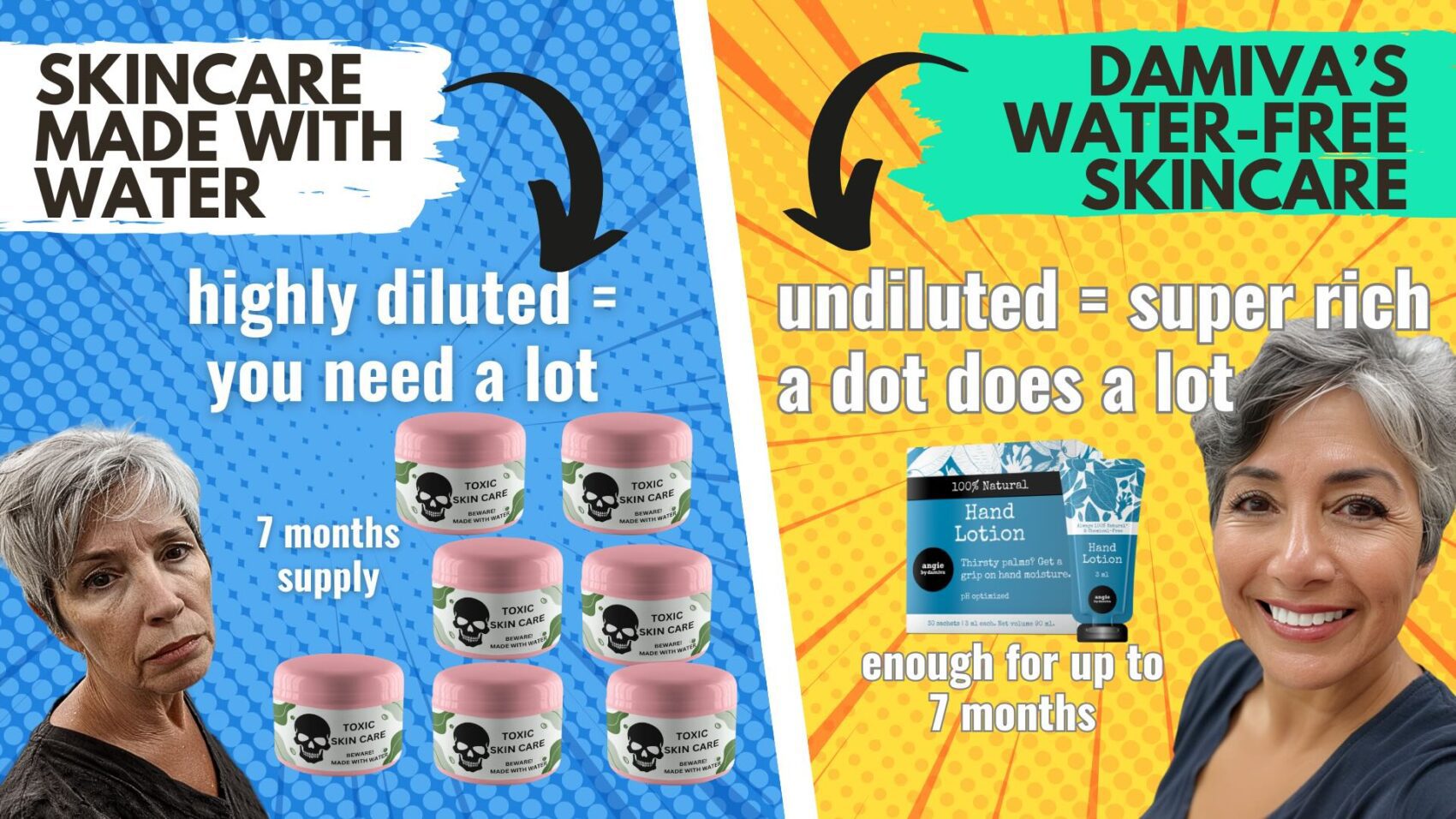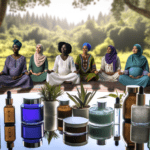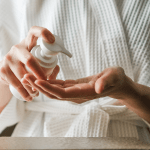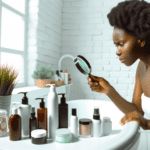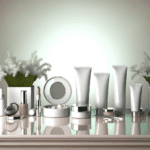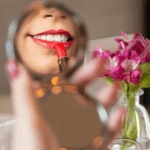Introduction to Safe Beauty
The Growing Demand for Non-Toxic Makeup
As awareness of the potential hazards of conventional beauty products increases, so does the demand for non-toxic makeup. Consumers are seeking out safer alternatives that align with a more health-conscious lifestyle. This shift is not just a fleeting trend but a profound change in the beauty industry, with a growing number of brands emerging to meet the demand for clean, safe, and sustainable cosmetics.
Understanding the Risks of Conventional Makeup
Traditional makeup often contains a cocktail of chemicals that can be absorbed through the skin, potentially leading to health issues. Ingredients such as parabens, phthalates, and synthetic fragrances have been linked to hormonal imbalances, allergies, and even cancer. The risks associated with these substances have prompted consumers to reconsider their beauty choices and opt for products with transparent ingredient lists and safer formulations.
Defining ‘Non-Toxic’ in the Beauty Industry
In the beauty industry, “non-toxic” refers to products formulated without ingredients known to pose a health risk to humans. While not all chemicals are harmful, non-toxic makeup focuses on excluding those linked to adverse health effects. This includes avoiding known carcinogens, endocrine disruptors, and irritants, ensuring that products are safe for both consumers and the environment.
The Importance of Safe Cosmetics for Health and Well-being
Using safe cosmetics goes beyond skin-deep beauty; it’s about protecting and enhancing one’s overall health and well-being. Non-toxic makeup reduces the risk of exposure to harmful chemicals, supports hormonal balance, and contributes to a healthier lifestyle. By choosing safe beauty products, consumers can enjoy the benefits of makeup without compromising their health.

Do you have the most commonly used but toxic, disease bringing chemicals in your skin care? Many chemicals in skincare are hormone disruptors and make menopause symptoms worse.
Find out more…
Identifying Harmful Ingredients
Common Toxins in Makeup and Their Effects
When it comes to makeup, certain ingredients can be more harmful than beneficial. Talc, often found in powders, can be contaminated with asbestos, a known carcinogen. PFAS, a class of chemicals used for durability and wear, are linked to cancer and infertility. Parabens, used as preservatives, can mimic estrogen and impact the reproductive system. Other concerning ingredients include lead, formaldehyde, mercury, and benzophenone-3, all of which pose various health risks from hormonal disruptions to carcinogenic effects.
Endocrine Disruptors and Their Impact on Women’s Health
Endocrine disruptors, like certain parabens and PFAS, can interfere with hormone function. These disruptions can lead to a host of issues, particularly for women, including increased risks of breast cancer, reproductive problems, and hormonal imbalances. The impact on women’s health is significant, making the avoidance of such ingredients crucial.
How to Read and Understand Cosmetic Labels
Understanding cosmetic labels is essential for identifying harmful ingredients. Look for products that are labeled as paraben-free, phthalate-free, or sulfate-free. Certifications such as EWG Verified or USDA Organic can also guide you towards safer choices. Remember, the fewer ingredients listed, the better, and always cross-reference with a trusted red list of hazardous chemicals.
The Role of Regulation in Cosmetic Safety
Regulatory bodies like the FDA in the US and the European Commission play a role in cosmetic safety, but the US lags behind with only 11 banned substances compared to over 1,600 in the EU. This discrepancy highlights the importance of consumers educating themselves and choosing brands that prioritize safety and transparency in their ingredient sourcing and manufacturing processes.
Health Concerns and Beauty
Link Between Cosmetics and Hormonal Imbalances
As we delve into the intricate relationship between cosmetics and health, a growing body of research suggests a link between certain makeup ingredients and hormonal imbalances. Endocrine-disrupting chemicals (EDCs) such as parabens and phthalates, commonly found in makeup, can mimic or interfere with the body’s hormones. These disruptions can lead to a myriad of health issues, including reproductive problems, weight gain, and increased risk of certain cancers. Consumers are encouraged to scrutinize product labels and opt for makeup that is free from known EDCs to safeguard their hormonal health.
Cosmetics and Breast Cancer: Is There a Connection?
The question of whether there is a connection between cosmetics and breast cancer is a pressing concern. Studies have identified the presence of parabens in breast tissue samples, suggesting that the absorption of these preservatives through the skin may contribute to the development of cancer. While the evidence is not conclusive, the precautionary principle advises choosing paraben-free cosmetics to minimize potential risks. As the beauty industry evolves, more brands are formulating safer alternatives, providing consumers with options that do not compromise their health for beauty.
Aging Gracefully: Safe Makeup for Mature Skin
Mature skin requires special attention, and safe makeup choices are paramount for aging gracefully. As skin ages, it becomes more sensitive and susceptible to the adverse effects of harsh chemicals found in conventional makeup. Non-toxic makeup, rich in natural antioxidants and hydrating ingredients, can support the skin’s health while providing the desired aesthetic effect. Brands that cater to mature skin with gentle, clean formulations help in maintaining a youthful radiance without exposing the skin to unnecessary risks.
Beauty Routines and Menopause: Adjusting for Changing Skin
Menopause brings about significant changes in skin physiology, necessitating adjustments in beauty routines. Hormonal fluctuations can lead to dryness, loss of elasticity, and increased sensitivity. Non-toxic makeup that prioritizes hydration and nourishment can help address these concerns. Products with natural oils, hyaluronic acid, and soothing botanicals can provide comfort and enhance the skin’s appearance during this transitional phase. By choosing clean beauty products, women can navigate the changes associated with menopause while maintaining their skin’s health and vitality.
Natural and Organic Alternatives
Benefits of Using Natural and Organic Makeup
Switching to natural and organic makeup can have profound benefits for both your skin and the environment. These products are crafted with ingredients that are derived from nature, avoiding harsh chemicals that can cause irritation or long-term damage to your skin. Organic makeup, in particular, is made with ingredients grown without pesticides or synthetic fertilizers, which is better for the planet. Using these products can lead to healthier skin, as they often contain nourishing elements like vitamins, minerals, and antioxidants that support skin health.
Key Ingredients to Look for in Non-Toxic Makeup
- Organic Aloe Juice: Known for its soothing and hydrating properties.
- Natural Pigments: Derived from fruits and vegetables, these provide color without synthetic dyes.
- Essential Oils: Used for natural fragrances and their therapeutic benefits.
- Shea Butter and Cocoa Butter: Offer moisturizing and healing properties.
The Myth of Water-Based Skincare Products
While water-based skincare products are often marketed as being lighter and less oily, they can sometimes be misleading. Water is a neutral base, but it’s the other ingredients that determine the product’s safety and effectiveness: When there is water in a product, the product needs to have chemical preservatives so that bacteria, fungi etc cannot grow in the product. And these chemicals are toxic! So it’s important to look beyond the “water-based” label and examine the full list of ingredients to be aware and understand that they include harmful chemicals or toxins.
DIY Makeup: A Safe and Personalized Approach
Creating your own makeup can be a fun and safe way to ensure you’re using non-toxic ingredients. DIY makeup allows for personalization to suit your skin type and color preferences. Common ingredients used in homemade makeup include arrowroot powder as a base for powders, beetroot powder for blush, and activated charcoal for eyeliner or mascara. Not only is this approach safe, but it also reduces waste and can be more cost-effective in the long run.
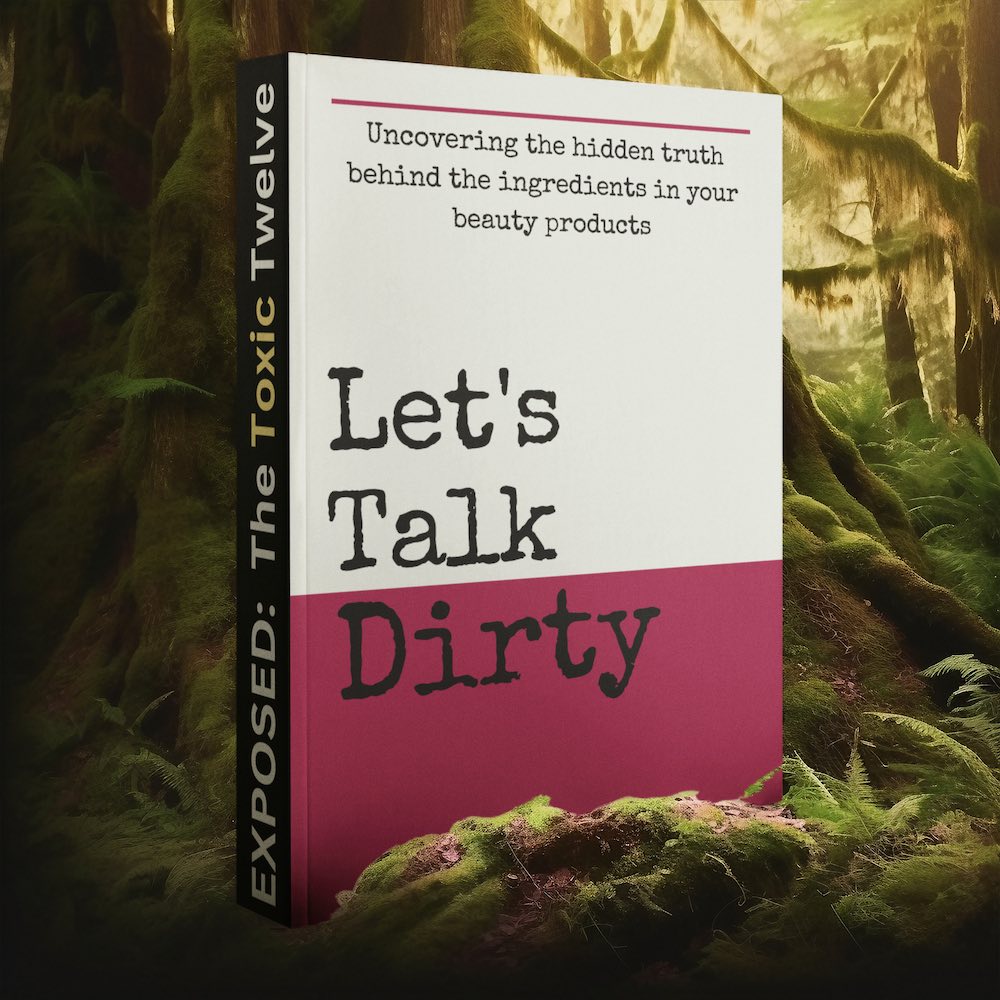
Feeling You Have a Right to Safe Beauty & Fem Care?
If so, it may be time for a change. It starts with knowledge. We have a few suggestions in our new guides.
Holistic Beauty and Lifestyle
Integrating Beauty into a Holistic Health Regimen
Beauty is more than skin deep; it’s a reflection of our overall health and well-being. Integrating beauty into a holistic health regimen means considering how our skincare and makeup routines affect our physical, mental, and emotional health. It involves choosing non-toxic makeup and skincare products that nourish the skin while aligning with healthy lifestyle choices such as a balanced diet, regular exercise, and stress management. By viewing beauty as a component of a larger health picture, we can make choices that enhance our natural beauty and support our body’s health.
Detoxifying Your Beauty Routine
Detoxifying your beauty routine is a crucial step towards embracing a holistic approach to beauty. This means eliminating harmful chemicals and toxins that can be absorbed through the skin and potentially disrupt bodily functions. Start by purging products that contain synthetic fragrances, parabens, phthalates, and other known irritants. Opt for products with simple, transparent ingredient lists, and consider incorporating organic and natural alternatives that are kinder to your skin and the environment.
The Impact of Diet and Exercise on Skin Health
What we eat and how we move our bodies have a significant impact on the health and appearance of our skin. A diet rich in antioxidants, vitamins, and minerals can help combat inflammation and promote a healthy glow, while regular exercise increases blood flow, aiding in the delivery of oxygen and nutrients to the skin. Hydration is also key; drinking plenty of water helps to flush out toxins and keep the skin hydrated and plump. Incorporating a balanced diet and regular physical activity into your lifestyle can lead to clearer, more radiant skin.
Stress, Sleep, and Skin: The Interconnected Nature of Health and Beauty
Stress and sleep are intimately connected to our skin’s health. Chronic stress can lead to skin issues such as acne, eczema, and premature aging due to the release of stress hormones like cortisol. Prioritizing stress-reduction techniques such as meditation, yoga, or deep-breathing exercises can help maintain a calm mind and a clear complexion. Similarly, quality sleep is essential for skin repair and regeneration. Ensuring you get 7-9 hours of restful sleep each night can improve skin elasticity and reduce the appearance of dark circles, contributing to a more youthful and vibrant appearance.
Navigating the Market
How to Choose Safe Makeup Brands
Choosing safe makeup brands requires vigilance and a keen eye for detail. Start by researching brands that prioritize transparency and safety in their products. Look for companies that openly disclose their ingredients and have a clear safety policy. Certifications from reputable organizations, such as the Environmental Working Group (EWG) or Leaping Bunny, can also be indicators of a brand’s commitment to non-toxic and cruelty-free products. Additionally, consider brands that actively participate in third-party testing to ensure their products meet stringent safety standards.
The Importance of Transparency in Ingredient Sourcing and Manufacturing
Transparency in ingredient sourcing and manufacturing is crucial for ensuring the safety of makeup products. Brands that provide detailed information about where their ingredients come from and how their products are made demonstrate accountability and a commitment to consumer health. This transparency helps to build trust and allows consumers to make informed decisions about the products they use on their skin. It also encourages industry-wide shifts towards ethical sourcing and sustainable practices.
Decoding Marketing Terms: ‘Clean’, ‘Green’, and ‘Sustainable’
Marketing terms like ‘clean’, ‘green’, and ‘sustainable’ are often used to attract consumers looking for non-toxic makeup options. However, these terms are not regulated and can be misleading. ‘Clean’ typically implies that a product is free from harmful chemicals, while ‘green’ suggests environmentally friendly practices. ‘Sustainable’ refers to the use of resources in a way that does not deplete them for future generations. To truly understand what these terms mean for each brand, consumers must look beyond the labels and investigate the company’s practices and ingredient lists.
The Cost of Non-Toxic Makeup: Is It Worth the Investment?
Non-toxic makeup often comes with a higher price tag compared to conventional products. This is due to the higher cost of safer, quality ingredients and sustainable packaging. While the initial investment may be greater, the long-term benefits to your health and the environment can make it worthwhile. Additionally, non-toxic makeup can be more concentrated and effective, requiring less product per use, which can offset the cost over time. Ultimately, investing in non-toxic makeup is a personal choice that weighs the value of safety and sustainability against financial considerations. We think it is definitely worth it to avoid the risks of hormonal problems, cancer and immune system issues.
Conclusion: Empowering Choices
As consumers, we have the power to drive change in the beauty industry by supporting brands that align with our values of safety, transparency, and sustainability. By carefully navigating the market and making informed choices, we can enjoy beauty without compromise and contribute to a healthier, more ethical world.
Do you know the 3 main ways how your body is exposed to harmful chemicals, which affect your hormones, your thyroid, health and beauty?
If not, it may be time to learn about them. It takes about 1-2 minutes.
We have a few suggestions how to avoid these silent health and immune system killers in our new guide.
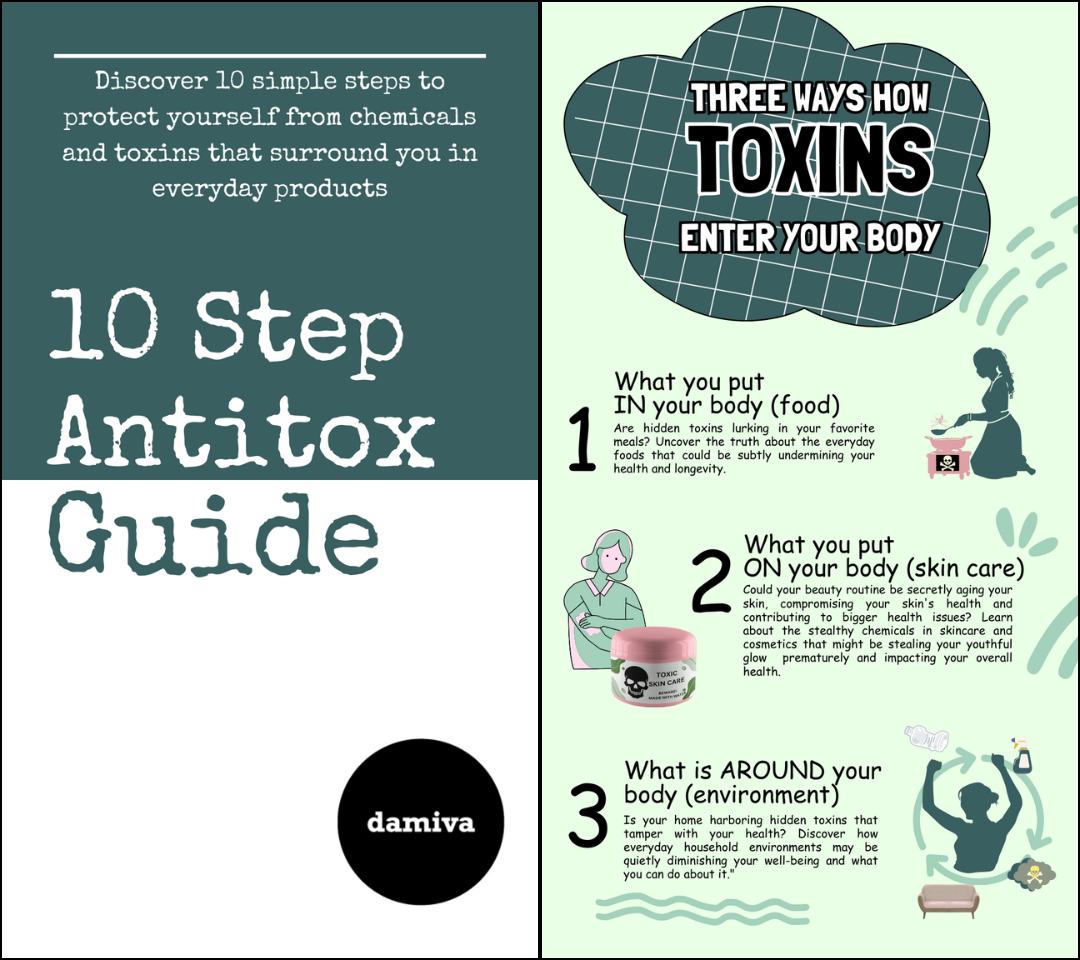
Conclusion: Empowering Choices
Taking Control of Your Health and Beauty
The journey through the world of safe, non-toxic makeup is not just about enhancing external beauty—it’s a profound act of self-care. By choosing products that are free from harmful chemicals, you are taking a stand for your health and asserting control over what you allow into your life. This empowerment comes from knowledge and the conscious decision to prioritize well-being over convenience or short-term aesthetic gains. It’s about making informed choices that align with your values and understanding the long-term benefits of these choices for both your health and the environment.
The Future of Non-Toxic Makeup
The future of non-toxic makeup is bright and promising. As awareness grows and demand increases, we can expect to see more innovation in the beauty industry, with brands developing safer, more effective products that do not compromise on quality. The rise of green chemistry and biotechnology is paving the way for exciting new ingredients and formulations that deliver exceptional results without the health risks associated with traditional cosmetics. The movement towards non-toxic beauty is gaining momentum, and it’s a trend that is here to stay, driven by consumers who refuse to settle for less.
Creating a Community Around Safe Beauty Practices
There is strength in numbers, and the collective effort to shift towards non-toxic beauty practices is creating a vibrant community. By sharing knowledge, experiences, and resources, individuals can support one another in making healthier choices. Social media, forums, and local meetups serve as platforms for discussion and discovery, helping to spread the word about the benefits of non-toxic makeup. This community is not just about sharing product recommendations—it’s a space for empowerment, advocacy, and collective action towards a safer, more transparent beauty industry.
Final Thoughts on Achieving Beauty Without Compromise
In conclusion, achieving beauty without compromise is an attainable goal. It requires diligence, education, and a willingness to embrace change. By identifying and choosing non-toxic makeup, you protect not only your own health but also contribute to a larger movement towards environmental sustainability and ethical consumerism. The power lies with each individual choice, and together, these choices can lead to a significant positive impact. Embrace the journey towards clean beauty with confidence, knowing that you are part of a growing community committed to health, well-being, and a more beautiful world—inside and out.
